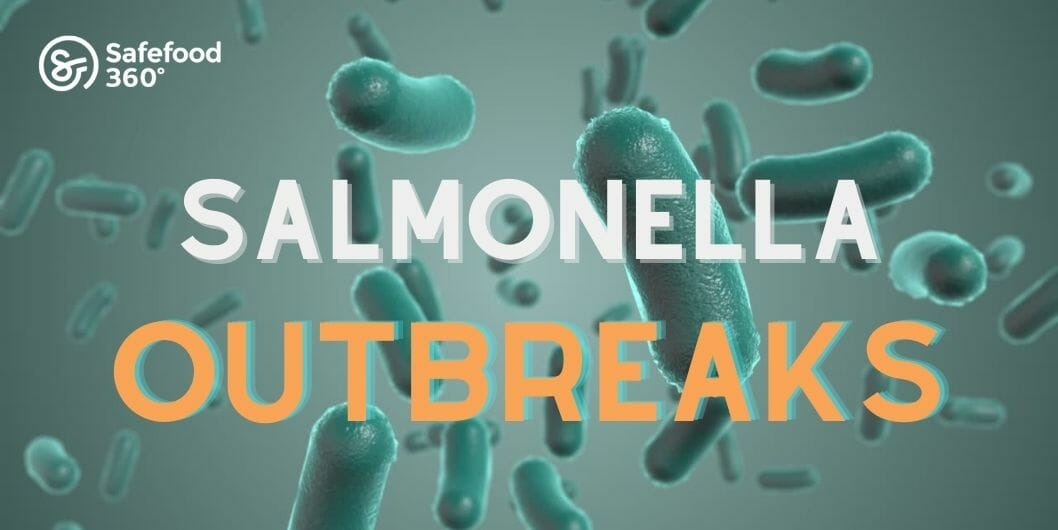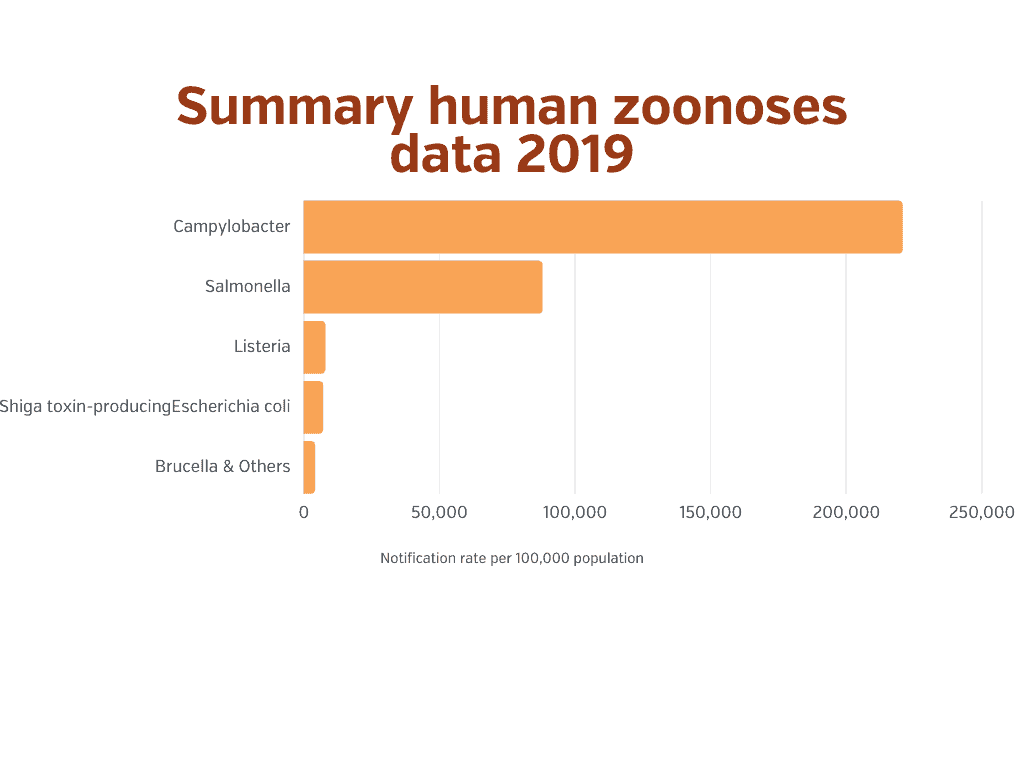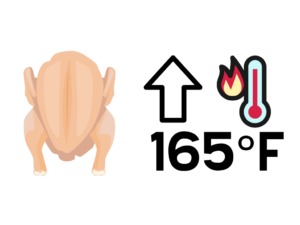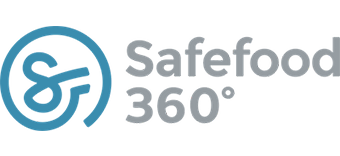How do you lower the risk of Salmonella contamination?

Due to the recent Salmonella outbreaks, Salmonella has become one of the top microbiological hazards in the world (For more information on Salmonella, check out our technical datasheet here). There have been 390 UK cases of Salmonellosis caused by two strains of Salmonella Enteritidis linked to frozen, raw, breaded chicken products since 2020. Additionally, it is being found in other food groups, recently discovered in Chocolate products across the US.
On 1 Aug 2022, the USDA listed new U.S. regulations to crack down on salmonella in chicken products:
“ Salmonella – an adulterant in a raw poultry product.”
- What is Salmonella?
- What are the symptoms of food poisoning from Salmonella?
- How do people get Salmonella in their daily lives?
- How can Salmonella be transferred to the general public?
- How would the new USDA regulation affect food product owners?
- Tips for your personal food hygiene:
- Tips for your company’s food hygiene:
- Conclusion
What is Salmonella?
Salmonella is one of the most common types of bacterially-caused food poisonings in the U.S. Food-poisoning bacteria (Salmonellosis is also the 2nd most zoonotic disease after campylobacteriosis in the EU) can grow and multiply on certain types of foods more easily than others. Some foods are at a higher risk in causing food poisoning, and some people are more likely to have food poisoning than others and Salmonella is often the cause of food poisoning.

Source: The European Union One Health 2019 Zoonoses Report
What are the symptoms of food poisoning from Salmonella?
- Fever and chills
- Nausea and headaches
- Diarrhoea
- Vomiting
- Stomach cramps
When you are exposed to Salmonella, typically after eating contaminated food, it usually takes one to three days for symptoms to appear. Most people who get salmonella recover in one week and fully recover.
Salmonella bacteria can lead to death if not treated early. Symptoms begin anywhere from six hours to six days after an individual accidentally consumes Salmonella. A person who gets Salmonella enteritidis typically has a fever, abdominal cramps, and diarrhoea starting 12 to 72 hours after eating the infected food or drink and lasts for four to seven days.
A serious Salmonella infection requires further testing to find out what particular germ is causing the illness and what antibiotics may be needed for proper treatment. Anything that changes your digestive tract, creating an environment where Salmonella bacteria will have an easier time staying alive, may also increase your risk for getting Salmonella.
How do people get Salmonella in their daily lives?

Poultry contains Salmonella bacteria naturally, which is killed by cooking meat to an internal temperature of 165°F or higher. After you cook your food to safe internal temperatures, the bacteria may possibly reappear and multiply to dangerous levels because salmonella grows rapidly at higher temperatures or when foods are left unrefrigerated. Although frozen foods contain low amounts of Salmonella, it grows when refrigerator temperatures are not cold enough, the poultry wasn’t rinsed properly when taken out, or even when the consumer didn’t properly wash their hands with soapy water after contact with food surfaces.
Salmonella transfers from raw foods to other surfaces through improper handling, contact surfaces and kitchen equipment. Sometimes, animal foods and treats may also have salmonella contamination, not noticeable to the nake eye. However, most pet food and treats are made correctly, making them Salmonella-free and safe for your pets.
How can Salmonella be transferred to the general public?
When you, a family member, or your pets touch or eat raw or undercooked meat, poultry, seafood or egg products, you are at risk of contracting Salmonella. Colin Sullivan, Chief Operating Officer of the FSA said: “You should always check the cooking instructions on food packaging, as different brands of the same product might have different instructions. Cooking food at the right temperature and for the correct length of time will ensure that any harmful bacteria are killed.”
How would the new USDA regulation affect food product owners?
Food product owners need to ensure the low quantity of Salmonella, especially to reconsider their safety plans for poultry in food handling, food processing and the food logistics.
To avoid getting products recalled, food safety managers need to re-educate their workers and re-design their procedures to ensure the food processes can pass through the food safety audit.
Tips for your personal food hygiene:
- Always carefully check and follow the cooking instructions provided on food packaging
- – If the packaging advises the product should be thawed/defrosted before cooking, follow the instructions
- – Consume or freeze food by its use-by date
- – Wash hands with soap and water after touching raw chicken products and before you handle ready-to-eat food
- – Avoid cross-contamination by cleaning any surfaces, plates or utensils that have been in contact with raw meat
Tips for your company’s food hygiene:
- – Ensure your employees are following the cooking instructions
- – Set up IoT sensors to prevent missing steps
- – Separate the uncooked food area from cooked products to prevent Salmonella cross-contamination
- – Perform sanitation practices for new employees
- – Keep well-documented food handling procedures on display in the working areas
- – Freeze products immediately once the food processing procedure is done
- – Complete sterilisation to the factory area within a fixed period
- – Use food safety software to monitor and track the activity logs in case of recalls
Conculsion
In the past, people always thought Salmonella existed in poultry only. After Kinder Chocolate’s outbreak, Salmonella has been restricted by the regulations to increase the food safety standards. Safety managers and quality assure managers would need to be aware of the latest legislation to prevent the food product recalls. Subscribe us for the latest food safety news. If you would like to have more details about how to ensure the food safety of your company, submit a demo request here.




